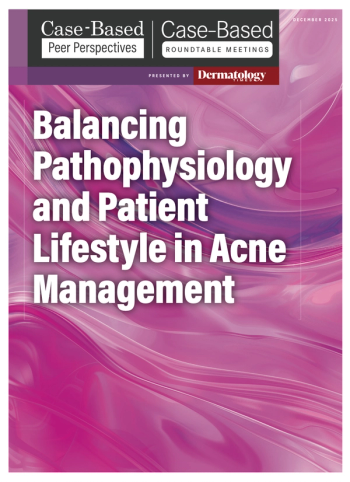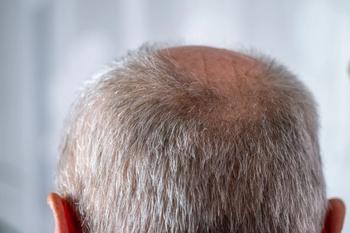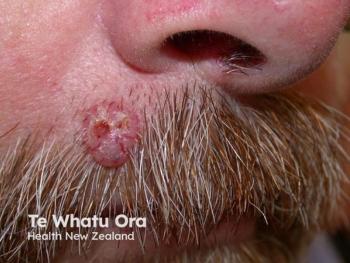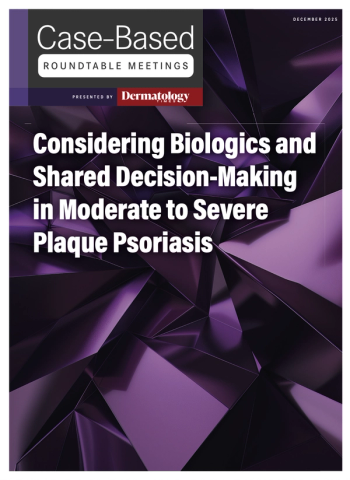
AbbVie Files BLA for TrenibotE in Glabellar Lines
Key Takeaways
- TrenibotE offers a rapid onset of effect within 8 hours and a short duration of efficacy lasting 2 to 3 weeks.
- The BLA submission is supported by data from over 2,100 patients, including pivotal phase 3 trials and a long-term safety study.
AbbVie seeks FDA approval for TrenibotE, a first-in-class botulinum toxin offering fast onset and short duration for glabellar lines.
If approved, this neurotoxin would serve as a fast-acting, short-term option for patients with moderate to severe glabellar lines.
What Sets TrenibotE Apart?
TrenibotE introduces a novel therapeutic profile that distinguishes it from currently-approved botulinum toxins, including onabotulinumtoxinA, abobotulinumtoxinA (Dysport; Ipsen), incobotulinumtoxinA (Xeomin; Merz Pharmaceuticals), and rimabotulinumtoxinB (Myobloc; Solstice Neurosciences), for example.2
It is designed for a rapid onset of effect, as early as 8 hours post-injection, and offers a shorter duration of efficacy lasting approximately 2 to 3 weeks. These characteristics make TrenibotE ideal for patients who are new to aesthetic treatments and may be hesitant to commit to longer-lasting effects.
"The submission provides evidence of TrenibotE's differentiated clinical profile to offer patients an opportunity to experience a faster onset and shorter treatment duration as an introduction to a neurotoxin," Darin Messina, PhD, senior vice president of aesthetics R&D at AbbVie, in a news release.1 "TrenibotE has the potential to transform the aesthetic toxin treatment landscape for new patients interested in the facial aesthetics category."
Clinical Foundation Behind the Application
AbbVie’s BLA submission is backed by a robust clinical development program involving more than 2,100 patients. The submission includes data from 2 pivotal phase 3 trials, M21-500 and M21-508, as well as a long-term, open-label safety study, M21-509.
These studies evaluated the safety, efficacy, and patient experience of TrenibotE in treating glabellar lines. Both pivotal trials met all primary and secondary endpoints, confirming TrenibotE’s efficacy in producing visible improvements in glabellar lines within hours. Furthermore, the observed duration of the therapeutic effect was consistently within the 2- to 3-week range.3
Notably, treatment-emergent adverse events were comparable to placebo across single and repeat treatments.
Addressing a Key Barrier in Aesthetic Medicine
For many individuals considering cosmetic procedures, the fear of appearing "frozen" or "unnatural" serves as a deterrent.4
Cheryl Burgess, MD, FAAD, a lead investigator in the phase 3 program, emphasized this patient-first advantage.
""oncern about an unnatural outcome remains a significant barrier for many patients considering medical aesthetics treatment," Burgess said.1 "Treatment with a product offering rapid onset of effect and short duration of action could help address this barrier and empower confidence for patients exploring their aesthetics treatment journey with innovation from the makers of Botox cosmetic."
Should the FDA grant approval, TrenibotE would become the first botulinum toxin serotype E approved for aesthetic use in the US.
References
- AbbVie submits Biologics License Application to US FDA for trenibotulinumtoxinE (TrenibotE) for the treatment of glabellar lines. News release. AbbVie. April 24, 2025. Accessed April 24, 2025.
https://news.abbvie.com/2025-04-24-AbbVie-Submits-Biologics-License-Application-to-U-S-FDA-for-TrenibotulinumtoxinE-TrenibotE-for-the-Treatment-of-Glabellar-Lines - Walker TJ, Dayan SH. Comparison and overview of currently available neurotoxins. J Clin Aesthet Dermatol. 2014;7(2):31-39
- Allergan Aesthetics announces positive topline results from two pivotal phase 3 studies of trenibotulinumtoxinE (BoNT/E) for the treatment of glabellar lines. News release. AbbVie. October 24, 2023. Accessed April 24, 2025.
https://news.abbvie.com/2023-10-24-Allergan-Aesthetics-Announces-Positive-Topline-Results-from-Two-Pivotal-Phase-3-Studies-of-TrenibotulinumtoxinE-BoNT-E-for-the-Treatment-of-Glabellar-Lines - Journal of Cosmetic Dermatology publishes data demonstrating patient satisfaction with natural-looking outcomes following treatment with onabotulinumtoxinA (Botox Cosmetic). News release. AbbVie. August 30, 2023. Accessed April 24, 2025.
https://news.abbvie.com/2023-08-30-Journal-of-Cosmetic-Dermatology-Publishes-Data-Demonstrating-Patient-Satisfaction-with-Natural-Looking-Outcomes-Following-Treatment-with-OnabotulinumtoxinA-BOTOX-R-Cosmetic
Newsletter
Like what you’re reading? Subscribe to Dermatology Times for weekly updates on therapies, innovations, and real-world practice tips.


















